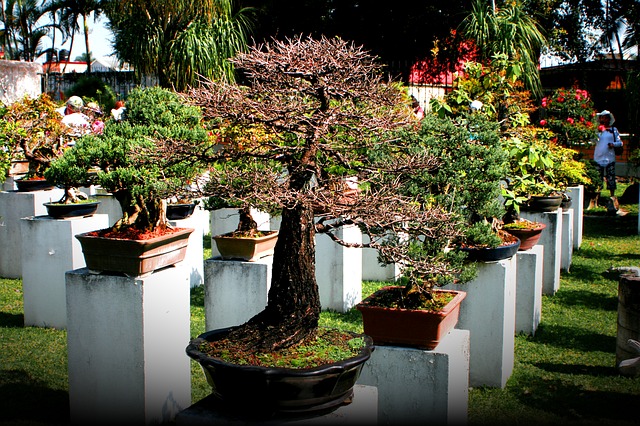Bonsai is a Japanese artistic discipline that consists of recreating an image of nature in minimum size. It is not about a particular tree, as is commonly believed, but about the art of growing miniature trees and plants. This is achieved by working with techniques such as transplanting, wiring or folding, which serve to model the plant to our liking.
This discipline appears in China two thousand years ago, so that the monks could worship these natural figures, symbols of eternity.
Over time, the technique is perfected until various styles of bonsai are created, determined according to their shape. Each style will be more or less suitable for species with one or another characteristic.
If you want to get into this art, we will teach you how to make a bonsai.
What do you need to make a bonsai?
- Seed of the selected species. These are not special seeds, but just any tree seed.
- Shallow rocker, with holes.
- Substrate (gravel, academe)
- Compost.
- Bonsai tools (pliers, pincers, concave blade…).
Instructions for making a bonsai
- Stratification. Depending on the seed, it may require a stratification process consisting of adapting the climatic conditions to its needs, cooling and humidifying the seed. The most common is to simply store it for a while in the fridge.
- Sow.
- We will try to do it in the fall, so that the growth of the bonsai is as similar as possible to what occurs in nature.
- We will cover the bottom of the pot with a mixture of gravel and academe.
- The next layer will fill two-thirds of the pot. This will be a mixture of the previous one with compost.
- At this height we will place the seeds, leaving a variable separation (according to the seeds to be sown).
- Cover completely with the previous mixture.
- To finish the sowing, we will water little by little, with a jet of water without force so that it does not remove the earth or the seeds.
- General care. We will ensure that our bonsai receives enough hours of sunlight and that its roots are moist and feed on both water and the substrate and additional fertilizer.
- First transplant. During the second or third year of life we will carry out the first transplant of the bonsai. At that time the land will have been exhausted but our bonsai will continue to grow so we will have to transplant it so that it continues to feed on a nutritious substrate.
- Training pruning.
- The first pruning will not be done until the third year of life of the bonsai.
- We will do it in spring or at the end of autumn.
- The plant is cut with a special sharp knife for gardening (concave pruner) giving it the desired shape. As we have already indicated, there are several styles, so we will choose the one that we like the most, as long as it is compatible with the chosen tree species.
- The most common cuts are bevel and concave, but this will depend on the look we want to achieve.
- We will try to eliminate thick branches, since it is difficult to bend them, as well as those that grow vertically.
- After making these cuts, it is essential to apply healing paste to the bonsai to heal its wounds.
- Training pruning is exhaustive for bonsai so we will let it rest for a few months.
- Wired. It consists of winding a copper or aluminum wire around the bonsai branches so that they take the desired shape.
- Different gauge wire is used depending on the thickness of the branches to be treated.
- We will wire our bonsai when its branches are so large that they require it.
- We can do it throughout the year, but if we are going to make large twists, it is best to do them in winter.
- If we wire new shoots, it is possible that these continue to grow on the fence, becoming deformed and scarring. That is why you must check your bonsai insistently.
- To wire, we will select two branches of similar thickness. We will start by rolling the trunk to move to one of the branches and then to the other. First the main ones and close to the trunk and then the secondary ones.
- If we want to bend the branch upwards, the winding must begin at the top of it. On the contrary, to bend a branch down, we will place the wire under it to begin with.
- Folded. This is the point where we will shape our bonsai.
- We must observe the branches and take into account the figure we want to achieve and from there we will select the branches in the order that suits us.
- We will take a branch by its external part and bend it, using the thumb as a support point.
- When the bonsai has the desired shape, we will place it in the shade for a while.
- We have to make sure that the wire does not stick too much into the tree during its growth season.
- We will unwire when appropriate.
Tips for making a bonsai
- If several wires come together in the trunk when wiring, try to keep them in the same direction and as close together as possible.


















